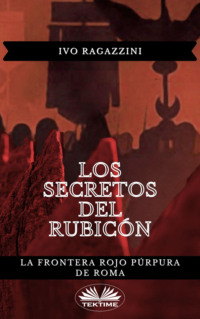
Полная версия
Under The Green Claws
5. The siege of Faenza
Faenza resisted for seven months, infuriating Frederick himself, since years before he had already conquered the town and it had come to terms with him.
Furthermore, during the siege Frederick II ran out of gold and money and had to resort to the help of the Forlì people to conquer Faenza, he also requested the Forlì people to issue special augustarians22 in leather, equivalent to imperial gold coins, which he then repaid in gold to the inhabitants of Forlì once the town had been taken and sacked.
So, after having conquered Faenza, Frederick II wanted to raze it to the ground and erase it from the earth, saying all who were against the Faenza who, defeated, were unable to appease his fury in any way and had begun to have it dismantled by teams of scouts.
The people of Faenza, not knowing what else to do, even turned to their nearby enemies from Forlì, begging them to intervene and intercede with the emperor to stop the devastation he was causing to the detriment of their city.
The people of Forlì accepted the requests for help from Faenza and went as a delegation to intercede with the emperor to halt the destruction of the city.
Frederick, not without objections and protests against the people of Faenza, whom he considered traitors,23 finally agreed the city could be spared. However, he imposed that the city should become imperial definitively and should be governed under the banner of a mayor selected from among their Forlì neighbors, since they had helped him and proved to be Ghibellines in heart and soul. So he ordered that the people of Faenza stop doing "Guelph things" and merge with Forlì.
Thus the two cities became, until Frederick's death, two cities united in a small state governed by the same imperial laws and defended by the same arms.
Furthermore, because of their loyalty, Frederick granted the people of Forlì the right to use the black eagle on a gold field24 on their municipal coat of arms and gave them the right to mint imperial coins because of their assistance and loyalty and, for this reason, the people of Forlì proudly left.
Many things changed, however, in 1249, when Frederick II died in Puglia and especially in the following years, when Carlo d'Anjou defeated Frederick II's son, Manfredi, in Benevento in 1266.
Thus the Guelphs, who had been expelled from Florence a few years earlier after their defeat at the battle of Montaperti, began to regain strength in Florence and Bologna. A battle began in those cities for dominance over the Ghibellines, which briefly extended to all of Romagna, with the support of the Church that claimed that land to be hers.
And so, while Carlo I d'Angiò was named pope the imperial vicar of Tuscany, the Tuscan Guelphs returned to Florence and the region, while the Tuscan Ghibellines had to leave and take refuge in Romagna, which remained one of the last of the Ghibelline sites still loyal to the imperial laws in Italy.
6. The dragon, the Guelph cross and the Ghibelline cross
At that time, from 1186, various apocalyptic stories circulating around Italy were attributed to the prophet Gioacchino da Fiore, which spoke of the coming of a dragon with the seven heads of seven antichrists.
Six heads had already been assigned to various historical figures of the past but the last, and most important, was still vacant.
Thus the final missing head of the dragon was quickly attributed to Frederick II, by a certain type of clergy, who believed in the prophecies of Gioacchino da Fiore, because of the fact that, in addition to wanting to reform the church, it was said that he was born out of a union between a prelate and an old nun. Furthermore, Frederick II spoke Arabic, his bodyguards were Arabs and, during the Crusades, he was more concerned with making peace than war in the Holy Land, so much so that he was nicknamed "the Dragon", while other Franciscan and poorer circles of the Church, paradoxically, attributed to him the role of reformer, as the expected apocalyptic persecutor of the corrupt Church and especially of the cardinals.
For this reason many poor friars and priests, and later also white Guelphs, fought in the ranks of the Ghibellines.
The Guelphs used a papal cross as their symbol and flag; while the Ghibellines, while not denying the existence of God, had the reverse an imperial cross with contrasting colors that mirrored the Guelph one and summed up the different philosophy between the two factions.
But how were they made and what was the difference between the two symbols? Let's take a look.
Perhaps the Ghibelline and Guelph crosses arose as symbols, even before the Guelphs and Ghibellines, during the Holy Roman Empire of Charlemagne.
But it was during the struggles of investiture between the papacy and the empire that they developed into a struggle for the right to elect emperors and administrators by the pope and bishops against the right claimed by the emperors to be elected directly by God without the intermediation of the Church.
Both symbols represented the power of God but there were two main ways to represent and understand them.
The first was imperial, that is, the power of God was pre-existent and was granted by Him in person directly to the emperors so that they ruled, already from the time of ancient Rome, long before the coming of Christ and the church.
The other was the power of the Church which, representing the will of God on Earth, acted as a direct intermediary and to whom the power of control by God over men had been granted and it was therefore he who decided whether or not to give it to the emperors.
Various disputes and many religious and military groups arose from these two visions, or philosophies, such as the Carolingians, the Templars, the Guelphs and the Ghibellines.
Two main symbols were used to represent these factions and ideas:
One was the cross of Saint John the Baptist, which was used by the Templars and Ghibellines.
The other was the cross of Saint George employed by the clergy and the Guelphs.
When the nobles and clergy organized expeditions or crusades, they put these flags on their heads that bore white or red crosses, depending on whether the divisions were under the nobles or the church or if emperors or popes had assembled them.
But how were these two flags made and what did they mean?
First you need to know that purple was the official color of ancient Rome and represented the Roman emperors, while white represented the color of God.
The Ghibelline flag of Saint John the Baptist was a large white cross on a completely purple background.
It meant that the imperial red and its nobility were already pre-existing everywhere, in which God then placed his white cross as a guarantee of purity and truth.
Opposite and contrasting in colors and meanings, was the Guelph flag of Saint George, where a purple cross on a completely white field meant that God pre-existed everywhere with his purity and granted a purple cross to the emperor who was therefore subordinate to God and to the Church. In practice, with God's permission, the cross of the imperial cardinal could be inserted in that flag on a white background.
The Guelphs said the church had granted permission through the pope and his bishops from the time of Pope Silvester, when he was crowned Constantine emperor of Rome, while the Ghibellines instead claimed that this was false.25
Subsequently, there was a split even within the Guelphs into white Guelphs and black Guelphs.
The white Guelphs, while recognizing their fidelity to God, did not recognize it in the wealth and moral corruption of the papacy, while the black Guelphs continued to be loyal to the papacy and the church in all things.
Gradually the white Guelphs simply called themselves the "Whites" and joined the cause of the Italian Ghibellines, while the "Black" Guelphs put themselves at the service of the clergy to make common cause against the Ghibellines and the "Whites".
So to these flags were also added the symbols of the white Guelphs and Florentine black Guelphs, which were nothing more than a white flag with Libertas26 written in silver for the whites, and a black flag with the same word Libertas, in gold, for the Black Guelphs. And incredibly these two coats of arms with the words Libertas belonging to the Whites and the Blacks, are still present today, one, that of the Whites in the municipal coat of arms of Forlì and that of the Blacks is part of the municipal coat of arms of Bologna, which at the time fought each other with no holds barred.
Thus, anyone today who takes the municipal coats of arms of the city of Bologna and Forlì will see, after careful observation that, even if arranged differently, the meanings and symbols they contain are exactly contrary to and opposite between papacy and empire, or Guelphs and Ghibellines, if you prefer.
It is possible to see in them not only the symbols of the empire in contrast to those of the papacy, but also that of the white Guelphs allied to the Forlì Ghibellines as opposed to the black Guelphs allied to the Bolognese.
In practice, in the coat of arms of Bologna the heraldic Anjou Chief27 is repeated twice and beneath are the Guelph crosses of Saint George in red and two bands in midnight blue, probably these were originally black, with the writing Libertas, or the flag of the black Guelphs.
On the other hand we find the Forlì coat of arms composed of the imperial eagle of Frederick II, which in the right claw holds an oval shield with the Ghibelline cross of Saint John and in the left claw holds a white shield with the writing Libertas, which is the symbol of the White Guelphs who were allied to the Forlì Ghibellines.
And if someone also wants to take a look at the Cesena coat of arms, a city a few miles from Forlì, they will notice how it is a subsequent symbol of reconciliation between white Guelphs and black Guelphs, being nothing more than a series of half white and half black symbols, gathered under the heraldic Anjou Chief .
7. The causes of the Guelph and Ghibelline battles in Romagna
In 1200, after the death of Frederick II, the Guelphs of Bologna, managed to conquer a large part of Romagna under the insignia of the Church, with the exception of the Ghibellines' Forlì, which continued to be a Ghibelline territory surrounded by Guelphs.
Until that time Bologna had been divided into three factions:
The Ghibellines led by the Lambertazzi.
The Guelphs led by the Geremei.
The populace was in the minority and neutral.
The Lambertazzi, perhaps to distract the Guelphs from Romagna, urged the people of Modena to attack, while the Geremei urged them to attack Forlì, and the people stood between the two factions to watch.
Bologna finally decided to try to conquer Forlì. So the Bolognese organized a regular army to march against the Romagna city, besiege it and subjugate the Romagna lands to the church.
This caused the people of Forlì to become aware of the danger they were in and they called upon Guido da Montefeltro to help them, who was known as "il Feltrano", an unparalleled Ghibelline, who was elected captain of the arms of Forlì and who prepared to fight against the Bolognese.
In 1273 the Bolognese army, ready to fight, set out along Via Emilia towards Forlì, to besiege it and force it to capitulate, but they found it very organized and equipped with numerous soldiers.
Furthermore, the Bolognese army was also made up of Ghibellines and Guelphs, and the people of Forlì took advantage of this during the first siege to establish friendships and make agreements with the Ghibelline Lambertazzi, which lead to future military and political alliances against the Geremei.
The Lambertazzi then pushed for peace, but the Geremei imposed conditions of surrender that were unacceptable to the people of Forlì.
Not even King Edward I of England, passing through Romagna returning from a crusade in the Holy Land, was able to reconcile Bologna and Forlì. This is because the eternal conflict was not between the two cities, but between Guelphs and Ghibellines.
So, finally, after two months of useless siege, the Bolognese decided that they needed many more troops to conquer it and withdrew without having caused even one injury to the Forlì people.
Instead the people of Forlì took advantage of the retreat of the Bolognese to take back Faenza, which after the death of Frederick II had returned to the Guelphs.
In this case they left the city with the excuse of pursuing the Bolognese army as far as Cosima, a town between Forlì and Faenza. The people of Faenza, seeing the people of Forlì approaching, closed the gates to prevent their entering, but il Feltrano had secretly agreed with some Ghibellines from Faenza and, with the excuse of wanting to continue his march towards Bologna, pretended to want to make camp in the countryside around Faenza without destroying or interfering in that land, so as not to raise suspicion.
During the night, with the help of the Acciarisi Ghibelline family,28 a door to Faenza was opened for him and Guido da Montefeltro's men, with the Mainardi family and many Ghibelline exiles, introduced themselves into Faenza to pursue the Manfredi Guelphs with all their factions. The next morning they completed the job by sending the Forlì army against the Guelph strongholds of Castel San Pietro and Solarolo, where the Guelphs who had escaped from Faenza were sheltered, and they also took those strongholds by force before they managed to organize themselves.
Finally, Guido da Montefeltro elected two Forlì imperial podestàs for Faenza29 and became captain of arms of Faenza, which he transformed it into a Ghibelline stronghold that would be very useful in the future in support of the Lambertazzi and the Bolognese Ghibellines.
8. The Bolognese guerilla war
Learning of the fall of Faenza into Ghibelline hands, the Bolognese began to fear the Lambertazzi had planned the move so as to bring the Forlì troops closer to Bologna.
Therefore, the following year, they decided to send another army back to Romagna with the Bolognese carroccio30 and the podestà at the head to free Faenza from the Forlì people.
When the Bolognese set out with the army, the Lambertazzi, regardless of the consequences of such a gesture, suddenly decided to attack the Bolognese mayor directly inside the city before he left with the army, while the Forlì Ghibellines advanced from Faenza as far as the walls of Bologna to give him their support.
This immediately, ignited a guerrilla war.
The gates of Bologna were closed to prevent the entry of the Forlivese, but when a fight broke out between the Lambertazzi and Geremei, the people abandoned all neutrality and sided with the Guelphs to expel the Ghibellines from Bologna and began attacking the Lambertazzi inside the city.
Somehow the people of Forlì managed to enter,31 and they began to help the Lambertazzi, therefore the Geremei and the populace had to retreat to their neighborhoods thanks to the Forlì reinforcements.
Thus between April and May 1274 a guerrilla war between the two factions began in Bologna that lasted, without respite, almost two months.
Guelphs and Ghibellines were grouped inside the walls and neighborhoods were divided, which challenged each other to the bitter end.
In those days anything could happen. There were clashes on both sides at all hours of the day and people were even murdered at night, and later found in ditches or floating in streams the next morning.
Bologna was in the balance and seemed to have fallen into the hands of the Ghibellines.
In the end, in order not to capitulate, the Bolognese Guelphs called upon a large reinforcement of Lombard Guelphs to support the city.
The Guelphs prevailed, while ten Lambertazzi leaders were captured and imprisoned during a coup by the mayor of Bologna, who had summoned them with an excuse to discuss their surrender.
The Lambertazzi realized there was no escape and had to agree to come to terms and leave Bologna.
Thus, on the morning of 2 June 1274, after months of guerrilla warfare, in the midst of an unreal silence, there was an exodus of twelve thousand armed Ghibellines with wives, children and supporters in tow, who left Bologna without anyone daring to stop them, leaving almost half the city empty in one sweep.
They headed along the Via Emilia in the direction of Faenza, previously occupied by the inhabitants of Forlì, which was ready to welcome them.
9. The Lambertazzi exiles in Romagna
The long Ghibelline line, embittered but not defeated, headed towards Faenza, recently cleared by the Guelphs, which was ready to welcome them under the banner of the Forlì imperial eagles.
Some of them with wives and children permanently sheltered in Forlì, but the bulk of the Bolognese Ghibellines were housed in the newly conquered Faenza.
They placed themselves under the command of the Forlì captain Guido da Montefeltro and quickly began to reorganize to fight the Bolognese Guelphs again.
The Bolognese, after the violence of those events and having recovered strength after the expulsion of the Lambertazzi, took courage from the situation and decided to organize an attack on Faenza and Forlì again, to defeat the Ghibellines of Romagna once and for all.
But the Ghibellines from Romagna, even if numerically inferior, were more combative and had a very skilled military captain, and Bologna and the Guelphs would soon find out about him for themselves.
10. Capture of the Bolognese carroccio
The following year the Bolognese, believing that the Lambertazzi were preparing to return from Faenza to Bologna, decided to anticipate them and remove them from Romagna once and for all.
The Bolognese made a conducted a few raids in the Faenza territories to test the strength of the Ghibellines. Subsequently they decided to put together an army that was reinforced by Guelphs from Lombardy, Imola, Cesena and Ravenna.
Once assembled, they left to march towards Faenza to free it from the Lambertazzi so they would have a stronghold from which to attack Forlì.
The people of Forlì and the Lambertazzi, knowing this, did their utmost to stop them.
They gathered a sizeable Ghibelline army and set about reinforcing the Faenza and Forlì defenses, while Guido da Montefeltro managed to gather a series of worthy Ghibelline commanders under him, who came from various parts of Tuscany and Romagna, followed by their troops.
Those who came under the Ghibelline insignia were Guglielmo de' Pazzi of Valdarno, commander of the Tuscan outcasts, Mainardo Pagani da Susinana, a Guido Novello and sons, Bandino, Tancredi, Ruggiero and Tigrino of the Guidi counts, lords of Modigliana with their people, to whom they joined the Forlì people Aliotto Pipini, Superbo Orgogliosi, Teodorico Ordelaffi32 and waited for the Bolognese near Faenza to forestall them before they put siege to the Ghibelline territory.
On 13 June 1275 as soon as the news came that the Bolognese had crossed the San Procolo33 bridge and were preparing to invade the territories of Faenza, they waited no longer and went to meet them so they could face them in open country.
Having come within sight of the Bolognese, Count Feltrano with the help of the Ghibelline commanders Maghinardo Pagani, Theodoric degli Ordelaffi, and other captains of the Lambertazzi, organized the troops for war and made a speech to incite them to battle.
The Bolognese captain Malatesta da Verucchio34 did the same with his men and immediately after they blew their trumpets, starting the battle of Ponte San Procolo.
Forthwith the Guelph cavalry, made up of the Bolognese nobility, were the first to relinquish their positions under the blows of the Lambertazzi.
Then they fled openly, abandoning the Bolognese infantry on foot, composed of the commoners, around the Bolognese carroccio.
The Bolognese army, left to itself, heroically organized themselves around the carroccio and the battle was kept in balance, but Guido da Montefeltro was decisive when he deployed heavy crossbows that systematically tore the Bolognese ranks to pieces.
To help you understand the scale of this battle eight thousand Bolognese were killed.
All fell, prey to the Forlivesi military pavilions, possessions, insignia, around three thousand chariots and, more importantly, the banner, which was the Bolognese municipal banner hanging from a pole, and the Bolognese carroccio, a four-wheeled cart decorated with the city insignia, around which the fighters gathered.
Guido da Montefeltro was made to climb triumphantly onto the Bolognese carroccio he had just conquered and was towed away by five hundred Bolognese prisoners to the walls of Forlì, where he was welcomed as a conqueror by a riot of crowds.
The Bolognese carroccio was kept as a trophy in the town hall, while the Bolognese banner was kept inside a Forlì convent, which at the time was named San Giacomo.35
11. The Ghibellines take all of Romagna
On the impetus of that Guelph defeat, the Ghibellines advanced towards Bologna in the following months and sacked a few villas and castles in the surroundings; had it not been for the rain and the inclement season they would have attempted to capture Bologna and the return of the Lambertazzi.
Again they set fire to Castel San Pietro, which had recently been rebuilt by the Bolognese, returned to Romagna and took the fortress of Cervia, which surrendered without a shot being fired, after three days of negotiations, in exchange for the freedom of the occupants.
Now, in Romagna the cities of Rimini, Ravenna and Cesena remained loyal to the Bolognese and the Forlivese turned their weapons against the latter in an attempt to take possession of the stronghold of Roversano, a strategic location a few miles from Cesena, which the Bolognese and the captain Malatesta da Verucchio rushed to defend, after the defeat of Ponte San Procolo, they had returned to Rimini to reorganize.
However, this time Malatesta da Verucchio was defeated and he had to flee with some troops and close himself up inside Cesena, leaving the Bolognese praetor with notables and a thousand soldiers, besieged inside the Roversano fortress, who eventually surrendered.
The Bolognese notables were taken prisoner and also taken as a trophy inside Forlì, while the captured soldiers were led beneath the walls of Cesena and let free in exchange for opening the gates to the Forlì people.
While the Malatesta and a few Guelphs fled towards Rimini, the people of Cesena opened their gates and accepted Teodorico Ordelaffi and Orgoglioso De' Orgogliosi from Forlì as their Ghibelline governors.
Now only Ravenna was needed to have all of Romagna under the Ghibellines, and the Ghibellines worked hard to take the latter city as well.
In 1276 il Feltrano surprised and dispersed a Bolognese rescue expedition near Bagnacavallo, which had been sent by the Geremei who, with the Florentine Guelphs and six hundred French knights, were marching to the rescue of Ravenna.
The Bolognese then organized new troops to rescue the city.
Guido da Montefeltro, like the good strategist he was, besieged Bagnacavallo so he would be able to control the road that led from Bologna to Ravenna and leave the latter isolated.
To do this he had the Faentine and Forlivese troops build a small fortification36 around the old castle of Cotignola, near Bagnacavallo, which, after fortified and enlarged, then became the town of Cotignola, where settlers from Forlì and Faenza were brought to provide for the capture of the Guelph Bagnacavallo.








